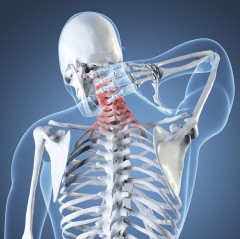 Despite some recent media reports, whiplash is a well researched and evidenced condition most commonly caused by car accidents and usually affecting the neck and shoulders. Often, symptoms of whiplash don’t appear until 6-12 hours later and they may continue to get worse in the days after the injury. Sometimes, it may even take a few days for any symptoms to show. Both Kevin and Joanne are both highly experienced in assessing and treating whiplash injuries.
Despite some recent media reports, whiplash is a well researched and evidenced condition most commonly caused by car accidents and usually affecting the neck and shoulders. Often, symptoms of whiplash don’t appear until 6-12 hours later and they may continue to get worse in the days after the injury. Sometimes, it may even take a few days for any symptoms to show. Both Kevin and Joanne are both highly experienced in assessing and treating whiplash injuries.
The most common symptoms of whiplash are neck pain and stiffness, tenderness along the back of the neck, loss of movement in the neck and headaches. Other symptoms can include pain in the lower back, pains or numbness, or paraesthesia (pins and needles), in the arms or hands, muscle spasms, dizziness, tiredness, difficulty in swallowing and ringing in the ears (tinnitus).
Usually, symptoms begin to improve after a few days and in around 60% of cases, symptoms completely disappear after four weeks. In the vast majority of cases symptoms will resolve in time and it is not uncommon for this to take several months.
The main goals of physiotherapy following whiplash are to:
- Improve your function
- Relieve your symptoms
- Get you back to normal activity as quickly as possible
If you have had a whiplash and do not have an exercise program please arrange an appointment as quickly as possible. It is well documented that gentle exercises are very important in recovery following whiplash.
Physiotherapy treatment may also include:
- Advice and education
- Soft tissue techniques
- TENS for pain relief
- Joint mobilisation
- Exercises to build strength in the neck muscles



